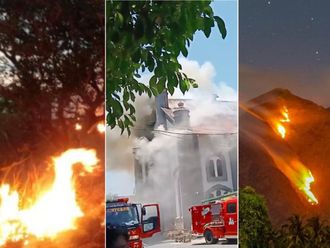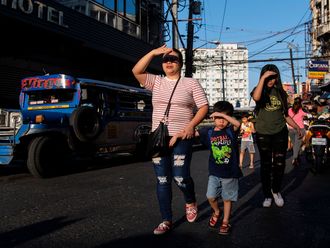Manila: An official has stressed on the need for the Philippines to upgrade its warning systems and calamity response capabilities, pointing out the country's susceptibility to natural disasters.
Speaking in suburban Quezon City at the Regional Forum on Effective Disaster Risk Reduction and Climate Change Adaptation in Greater Metro Manila Area, Presidential Communications Secretary Herminio Coloma underscored preparedness at all times of disaster.
"We need to be constantly vigilant, we need to be fully prepared, we need to communicate effectively, we need to work together, we need to rally our citizens and people to protect our families and children," Coloma said.
The forum seeks to increase local understanding of natural hazards, climate change and their impacts on the region and surrounding provinces and promote the integration of disaster risk reduction and climate change adaptation into local development planning.
Earthquake strikes Surigao
Just hours after Coloma gave his speech Friday noon, a powerful 5.9 magnitude earthquake struck Surigao province in Southern Philippines.
According to the National Disaster Risk Reduction and Management Council (NDRRMC) the quake injured 35 people mostly late afternoon promenaders at the Gaisano Mall in the province.
Reports said panic gripped residents and mall visitors as the earthquake occured around 3:58 pm as people scampered to safety. Fortunately there were no tsunamis.
The Philippines' location makes it susceptible to natural calamities such as earthquakes and devastating weather disturbances such as typhoons and powerful storms.
Given this, Coloma said the country need to be better prepared for calamities.
"Our current system of typhoon alerts needs to be supplemented by a formal
system of flood alert. Typhoon Sendong (international codename: Washi) made us realize the importance of creating heightened citizen consciousness about the perils of abrupt climate change," he added.
"An average of 24 typhoons hit the Philippines every year, according to the geo-hazard maps, 66 out of 80 provinces are in constant risk of landslides, mudslides and flooding. Some twenty provinces have been identified as extremely high-risk areas, and before the next disaster strikes we must prepare our local governments and citizens to respond in a manner that will protect lives and minimize casualties," he added.
Coloma also bared the various contingency efforts of the Aquino government focusing on disaster risk reduction and the implementation of zero
casualties during calamities. "We have posted in our website geo-hazard maps prepared by the Mines and Geo-sciences Bureau of environment department, we are conducting information campaigns in the provincial level and encouraging local officials to implement strict zoning regulations to ensure that homes are not built or will be relocated away from danger zones," Coloma said.
The earthquake in Surigao followed the February 6 magnitude-6.9 quake that hit Negros Oriental, in central Philippines, resulting in landslides that killed dozens of people.











